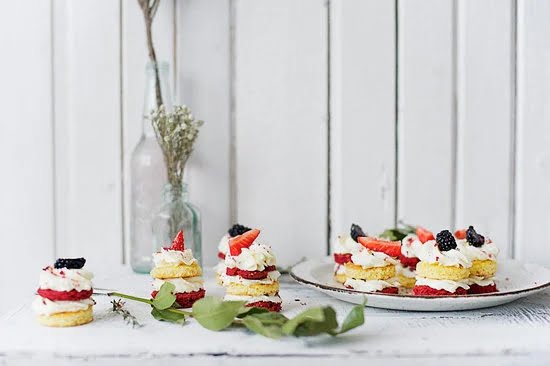Spinning Cake Decorating opens up a whole new world of creativity and precision when it comes to decorating cakes. With the ability to effortlessly rotate a cake while working on it, decorators can achieve smooth, consistent finishes and intricate designs like never before. In this article, we will delve into the art of spinning cake decorating, exploring what it is and why it has become such a popular technique among cake enthusiasts.
Imagine being able to effortlessly spin a cake, allowing you to easily apply frosting, create delicate patterns, and add intricate details with ease. That is exactly what spinning cake decorating offers. This technique revolutionizes the way cakes are decorated, providing decorators with enhanced control and precision over their designs.
The advantages of spinning cake decorating are numerous as well. Not only does it allow for smoother finishes and more precise details, but it also saves time by eliminating the need to constantly rotate the cake manually. With a spinning cake stand as your trusty tool, you can elevate your cake decorating skills to new heights.
So whether you’re a professional baker looking to enhance your skills or an aspiring decorator eager to explore new techniques, this article will serve as a comprehensive guide to all things spinning cake decorating. From the benefits of using a spinning cake stand to tips and tricks on mastering the technique, we’ve got you covered.
Join us on this journey as we dive into the fascinating world of spinning cake decorating and discover how you can take your creations to the next level.
The Importance of a Spinning Cake Stand in Cake Decorating
A spinning cake stand is a crucial tool for cake decorators as it can greatly enhance the decorating process. This section will delve into the importance and benefits of using a spinning cake stand, highlighting how it can make the entire decorating experience smoother and more efficient.
One of the key advantages of using a spinning cake stand is that it allows decorators to have full access to all sides of the cake without having to physically maneuver around it. By placing the cake on a revolving platform, decorators can effortlessly rotate the cake and work on different areas with ease. This eliminates the need to constantly reposition oneself or risk smudging or damaging the decoration while trying to reach certain angles.
Furthermore, a spinning cake stand provides decorators with better control and precision in their work. With a gentle spin of the stand, decorators can smoothly apply frosting, create intricate designs, and add finishing touches to their cakes. This controlled movement not only improves accuracy but also ensures consistency in design throughout the entire cake surface.
Moreover, a spinning cake stand saves time during the decorating process. Instead of moving around the cake manually, decorators can stay in one position and let the rotating platform do all the work for them. This improved efficiency allows decorators to focus more on their creativity and attention to detail, resulting in beautifully decorated cakes in less time.
| Advantages | Description |
|---|---|
| Improved Access | All sides are easily accessible without repositioning |
| Better Control | Smooth rotation enables precise decorating work |
| Time-saving | Efficiency allows more focus on creative details |
Different Types of Spinning Cake Stands
Spinning cake stands are an essential tool in cake decorating, allowing decorators to easily rotate cakes as they work on them. This section will explore the different types of spinning cake stands available in the market and highlight their features and functionalities.
- Manual Spinning Cake Stands: These cake stands require the decorator to manually rotate the cake by hand. They usually consist of a turntable with a non-slip surface that sits on top of a base. The advantage of manual spinning cake stands is that they are generally more affordable than motorized ones. However, they may require more effort and control from the decorator to achieve smooth rotations.
- Motorized Spinning Cake Stands: For decorators who prefer a more convenient option, motorized spinning cake stands are an excellent choice. These stands come with built-in motors that rotate the cake automatically at a controlled speed. Some motorized stands even have adjustable speed settings to cater to different decorating needs. Motorized spinning cake stands can be particularly useful when decorating larger or heavier cakes that may be difficult to rotate manually.
- Battery-Operated Spinning Cake Stands: Another type of spinning cake stand is battery-operated ones, which provide cordless convenience for decorators. These stands are powered by batteries and offer portability, allowing decorators to work anywhere without being limited by electrical outlets. Battery-operated spinning cake stands are especially popular among mobile decorators who work on-site at events or parties.
- Multi-Level Spinning Cake Stands: For decorators looking to create visually stunning tiered cakes, multi-level spinning cake stands are a great option. These stands feature multiple tiers or platforms that can spin independently or together, allowing decorators to easily access and decorate each tier without disturbing the others.
By understanding the different types of spinning cake stands available, decorators can choose the one that best suits their needs and preferences. Whether it’s manual or motorized, battery-operated or multi-level, a spinning cake stand can greatly enhance the cake decorating process and make it more efficient. With the right spinning cake stand, decorators can achieve smooth rotations and flawless designs for their cakes.
| Type of Spinning Cake Stand | Features and Functionalities |
|---|---|
| Manual Spinning Cake Stand | Requires manual rotation by hand, non-slip surface, affordable |
| Motorized Spinning Cake Stand | Built-in motor for automatic rotation, adjustable speed settings |
| Battery-Operated Spinning Cake Stand | Cordless convenience, powered by batteries, portability |
| Multi-Level Spinning Cake Stand | Multiple tiers or platforms that spin independently or together |
Tips and Tricks for Spinning Cake Decorating
Step-by-step guide for effective utilization of a spinning cake stand
To make the most out of your spinning cake decorating experience, it is essential to understand how to effectively use a spinning cake stand. Here is a step-by-step guide to get you started:
- Prepare the cake: Start by preparing your cake with a smooth and even surface. Level the top and trim the edges if needed, ensuring that all sides are straight.
- Apply a crumb coat: Before decorating, it is helpful to apply a crumb coat-a thin layer of frosting-to seal in any loose crumbs. This will provide a smoother base for your final design.
- Position the cake on the spinning stand: Place your crumb-coated cake on the center of the spinning cake stand, ensuring that it is centered and secure.
- Spin the cake stand: Gently spin the revolving mechanism of the cake stand, allowing it to rotate smoothly and evenly.
- Apply frosting or icing: Hold your offset spatula or piping bag with your desired frosting or icing in one hand, while using your other hand to gently turn the rotating cake stand. This allows you to apply an even layer of frosting around the sides and top of the cake effortlessly.
- Smooth out the frosting: To achieve a polished finish, use a bench scraper or frosting smoother against the rotating cake as you turn it slowly. This will help create clean lines and remove any excess frosting.
- Decorate with precision: With your fully frosted base, let your creativity flow. Use piping tips, fondant cut-outs, or other decorative tools to create stunning designs on your spinning cake.
- Clean up any mess: After completing your decoration, stop spinning the cake stand and clean up any stray icing or decorations around the base of the cake.
Techniques to create stunning designs using spinning technique
Spinning cake decorating opens up a world of possibilities for creating impressive designs on your cakes. Here are some techniques to help you achieve stunning results:
- Ombré effect: To create a beautiful ombré effect, start with a darker color of frosting at the base and gradually transition to a lighter shade as you move upwards or vice versa. Use a spatula or palette knife to blend the colors together while rotating the cake stand.
- Textured patterns: Add texture to your cake by using different tools on the spinning cake stand. For example, if you want a ribbed design, run the edge of a bench scraper vertically along the sides as you rotate the cake.
- Marbling effect: Achieve an elegant marbled appearance by applying contrasting colors of frosting in large dots or stripes around the sides of the cake. Use a clean spatula or offset spatula to swirl and blend the colors together while continuously spinning the cake.
- Drip technique: Create eye-catching drips using ganache or royal icing by gently drizzling it over the edges of your spun cake. Experiment with different consistencies and angles to achieve varying drip lengths and effects.
- Geometric patterns: Utilize stencils or cut-outs to create intricate geometric designs on your spinning cake. Hold them against the rotating surface and use an airbrush or dusting powders to add color and detail.
Remember, practice makes perfect. Don’t be afraid to experiment with different techniques and designs on your spinning cake. The possibilities are endless, so let your imagination take flight.
Inspiring Spinning Cake Decorating Ideas
Spinning cake decorating is not only a technique that enhances the overall appearance of cakes, but it is also an opportunity for decorators to showcase their creativity and create visually stunning designs. In this section, we will explore some inspiring spinning cake decorating ideas that can help you take your cake decorating skills to the next level.
One popular design achieved through spinning cake decorating is the ombre effect. By using different shades of a single color and gradually blending them together, decorators can create a beautiful gradient effect on the cake. This can be achieved by evenly spreading a thin layer of icing in each shade onto the rotating cake, allowing them to naturally blend into each other as the cake spins. The result is a mesmerizing and eye-catching ombre design.
Another inspiring idea for spinning cake decorating is creating geometric patterns on the cake’s surface. With the help of a spinning cake stand, decorators can easily achieve precise lines and shapes on their cakes. Using different colors of icing or fondant, decorators can create intricate geometric patterns such as stripes, chevrons, or diamonds. The rotating motion allows for smooth and consistent lines, resulting in a visually appealing design.
For those looking to add texture and dimension to their cakes, consider incorporating ruffles into your spinning cake decorating technique. Ruffles can be created by piping buttercream or royal icing in horizontal or vertical lines along the sides of the rotating cake. As the cake spins, these lines form beautiful waves and give the illusion of fabric ruffles cascading down the sides. This technique adds an elegant and unique touch to any cake design.
By experimenting with different colors, textures, and techniques mentioned above, decorators can achieve stunning results with spinning cake decorating. It’s important to remember that practice makes perfect when it comes to mastering this skill. Don’t be afraid to experiment and try out new ideas – you might just discover your own signature style in spinning cake decoration.
Mastering the Spinning Technique
Spinning cake decorating involves creating stunning designs and patterns on cakes by spinning them on a rotating platform. It is a technique that requires precision and skill, but with the right guidance, anyone can master this art form. In this section, we will interview an experienced cake decorator who specializes in spinning techniques and gain valuable insights and advice to improve our skills in spinning cake decorating.
Introducing the Expert Cake Decorator
Our expert for today is Sarah Smith, a highly skilled cake decorator who has been using spinning techniques for over 10 years. Sarah’s passion for cake decorating started at a young age, and she has honed her skills through extensive practice and experimentation. Her beautiful creations have earned her a reputation as one of the best spinners in the industry.
In our exclusive interview with Sarah, she shares her journey into the world of spinning cake decorating and provides valuable tips to help beginners get started. She emphasizes the importance of patience and practice when learning this technique.
Tips and Tricks from Sarah Smith
According to Sarah, one of the most important factors in mastering the spinning technique is choosing the right consistency of icing. The icing should be smooth enough to spread easily but firm enough to hold its shape during rotation. Experimentation with different types of icing recipes is key to finding what works best for you.
Sarah also highlights the significance of maintaining steady hand movements while decorating on a rotating stand. This ensures clean lines and prevents smudging or uneven patterns. She recommends using an offset spatula or scraper for smooth spreading and proper control over the icing.
Another helpful tip shared by Sarah is to start with simple designs before attempting complex patterns. Practice basic techniques such as stripes, rosettes, or swirls first to build confidence in handling the rotating stand effectively.
Continued Learning
To further enhance your skills in spinning cake decorating, Sarah recommends seeking inspiration from other cake decorators and attending workshops or online tutorials. Learning from different sources can help broaden your repertoire of techniques and keep you updated with new trends in the industry. Sarah herself has found great inspiration from fellow cake decorators on social media platforms and encourages others to do the same.
Common Challenges and How to Overcome Them in Spinning Cake Decorating
When it comes to spinning cake decorating, like any other art form, there are bound to be challenges that arise. However, with some guidance and practice, these challenges can be easily overcome. In this section, we will explore some common challenges that beginners may face when engaging in spinning cake decorating and provide helpful solutions to overcome them.
One of the most common challenges in spinning cake decorating is achieving smooth and even rotations of the cake stand. Uneven rotations can result in uneven decoration and an overall unbalanced design. To overcome this challenge, it is important to ensure that the spinning cake stand is sturdy and stable.
Investing in a high-quality stand with a reliable base will greatly improve the rotating motion. Additionally, placing a non-slip mat or grip pads on the surface below the stand can provide additional stability.
Another challenge that decorators may encounter is maintaining consistent pressure when applying icing or other decorations onto the spinning cake. It can be challenging to evenly distribute pressure while keeping up with the rotation of the cake stand.
To address this issue, it is recommended to practice applying consistent pressure using a piping bag or offset spatula on a stationary object before attempting it on a spinning cake. This will help develop muscle memory and make it easier to maintain even pressure during rotation.
Additionally, one common challenge faced by beginners is achieving clean edges and sharp lines in their designs. It can be difficult to control icing or other decoratives when they are under constant motion.
A great tip for overcoming this challenge is to utilize stencils or templates as guides when applying intricate designs onto the cake. By placing a stencil securely onto the surface of the cake while it spins, decorators can easily follow the template and achieve clean edges and precise lines.
Spinning cake decorating may come with its fair share of challenges but with patience and practice, they can all be conquered. By addressing issues such as uneven rotations, maintaining consistent pressure, and achieving clean edges through tips and tricks, decorators can enhance their skills and create stunning designs with ease. With perseverance, even beginners can overcome these common challenges and elevate their spinning cake decorating techniques to new heights.
Tools and Equipment for Spinning Cake Decorating
Spinning cake decorating requires the use of specific tools and equipment to achieve the best results. Having the right tools at hand can make the process smoother and more efficient. Here is a comprehensive list of essential tools needed for spinning cake decorating:
- Spinning Cake Stand: The most crucial tool for spinning cake decorating is a spinning cake stand. This stand allows you to easily rotate your cake as you decorate, ensuring even and precise designs. Look for a sturdy stand with smooth rotation capabilities.
- Offset Spatulas: These angled spatulas are essential for smoothing frosting and creating clean edges on your cakes. They come in various sizes, so it’s good to have a few options depending on the size of your cake.
- Bench Scraper: A bench scraper is useful for smoothing frosting around the sides of your cake, creating sharp edges and removing excess frosting.
- 4.Piping Bags and Tips: Piping bags and tips are necessary for adding intricate designs and borders to your cakes. Invest in a variety of piping tips to achieve different textures and patterns.
- 5.Turntable: While not specifically designed for spinning cake decorating, a turntable can be an alternative option if you don’t have access to a spinning cake stand. It allows you to manually spin your cake as you decorate.
- 6.Cake Leveler: A leveler helps ensure that your cakes are evenly sliced, providing a flat surface for decoration.
- 7.Icing Smoother: An icing smoother or scraper is used to create smooth finishes on frosted cakes by removing any imperfections or air bubbles.
- 8.Angled Palette Knife: An angled palette knife is great for spreading frosting smoothly on top of your cakes or creating textured designs.
- 9.Edible Glitters or Sprinkles: To add extra flair to your decorated cakes, having edible glitters or sprinkles in various colors can bring excitement and dimension to your creations.
- 10.Decorating Brushes: Brushes come in handy when applying edible colors or adding intricate details to your design.
When selecting your tools and equipment, it’s important to choose high-quality items that will last for a long time. Additionally, consider the size of your cakes and the type of designs you want to create when purchasing these tools. With the right tools at hand, you’ll be well-equipped to elevate your cake decorating skills using spinning techniques.
Safety Measures and Best Practices in Spinning Cake Decorating
Spinning Cake Decorating is a delightful and creative technique that allows cake decorators to add intricate designs and patterns to their cakes. However, it is essential to prioritize safety while practicing this art form. In this section, we will discuss some safety measures and best practices that every cake decorator should follow when engaging in spinning cake decorating.
Firstly, it is crucial to ensure that the spinning cake stand is stable and secure before starting the decorating process. Make sure the base of the stand is placed on a level surface, and all the components are tightly locked in place. This will prevent any accidents or mishaps during the spinning motion.
Another important safety measure is to always wear protective gear such as gloves and an apron when working with frosting or other cake decorating mediums. These precautions will help keep your hands clean, protect your skin, and prevent any allergic reactions caused by certain ingredients.
Furthermore, it is vital to handle sharp tools such as palette knives or spatulas with caution. Always keep these tools away from children’s reach and ensure that they are properly cleaned and sanitized before each use.
In addition to safety measures, there are some best practices to consider while engaging in spinning cake decorating. One important practice is to start with a small amount of frosting on the cake before spinning. This allows for better control over the design and ensures that excess frosting doesn’t fly off during the spinning motion.
Moreover, it is advisable to work in a well-ventilated area to avoid inhaling any potentially harmful fumes from edible glitters or spray paints often used in decorating. Additionally, take breaks between decorating sessions to rest your hands and avoid strain or fatigue.
By following these safety measures and best practices, you can enjoy spinning cake decorating while ensuring a safe environment for yourself and others around you. Now that we have covered safety guidelines let’s move on to exploring different tools and equipment needed for successful spinning cake decorating.
Conclusion
In conclusion, spinning cake decorating is a fascinating art form that can elevate your cake decorating skills to new heights. With the use of a spinning cake stand, decorators have the opportunity to enhance their creative process and achieve stunning results. The benefits and advantages of using a spinning cake stand are numerous, making it an essential tool in every baker’s arsenal.
Throughout this article, we have explored different types of spinning cake stands available in the market and highlighted their features and functionalities. By providing step-by-step guides and techniques, we have empowered readers to effectively utilize a spinning cake stand and create beautiful designs. Additionally, we have showcased inspiring cake designs achieved through the spinning decorating technique, proving its versatility and potential for unique patterns.
To further master the spinning technique, we interviewed an experienced cake decorator specializing in spinning techniques who shared insider tips and advice. We also addressed common challenges that beginners might face during spinning cake decorating and offered troubleshooting solutions to overcome them. Furthermore, we provided a comprehensive list of essential tools needed for spinning cake decorating along with tips for selecting the right equipment.
As you embark on your journey into spinning cake decorating, it is important to prioritize safety measures and best practices. We have discussed potential safety hazards that may arise during the process and made recommendations to ensure a safe and enjoyable experience for all decorators.
Frequently Asked Questions
What are the cake spinny things called?
The cake spinny things are typically referred to as cake turntables or rotating cake stands. These specialized tools are designed specifically for the purpose of making it easier to frost and decorate cakes. They consist of a circular base with a flat top surface that can rotate smoothly, allowing you to spin the cake as you work on it.
Do you really need a cake turntable?
While it is not an absolute necessity, having a cake turntable can greatly benefit anyone involved in baking and decorating cakes regularly. Cake turntables provide several advantages that make the process more efficient and enjoyable.
By spinning the cake while frosting or decorating, you have better access to all sides, which helps achieve smoother finishes and even designs. It also reduces the need to constantly adjust your positioning or move around the table, making the overall process quicker and more convenient.
What do you use to spin a cake?
To spin a cake, one would typically use a dedicated tool called a cake turntable or rotating cake stand. However, if you don’t have access to one, there are alternative methods that can be employed. Some people use a lazy Susan or revolving tray, which can serve as makeshift substitutes for a proper cake turntable.
Another option is using two round plates stacked on top of each other with a non-slip mat in between them to create friction that allows rotation. In summary, while it’s ideal to use a proper cake turntable for optimal results, improvising with other items like lazy Susans or stacked plates can still get the job done in a pinch.

Welcome to our cake decorating blog! My name is Destiny Flores, and I am the proud owner of a cake decorating business named Cake Karma. Our mission is to provide delicious, beautiful cakes for all occasions. We specialize in creating custom cakes that are tailored specifically to each customer’s individual needs and tastes.





